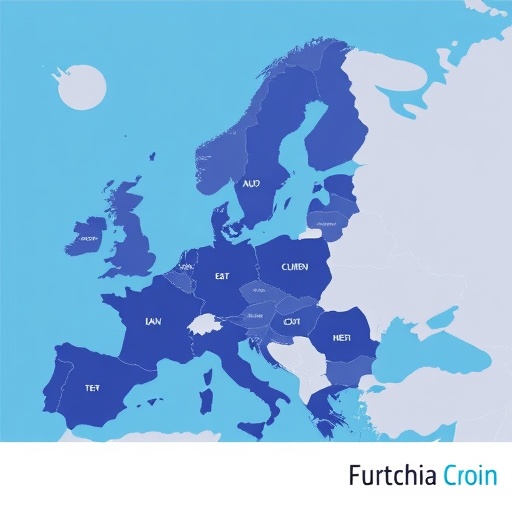In the face of accelerating climate crises, Europe stands at a precarious crossroads in its battle against cascading climate change impacts. Recently, a groundbreaking study published in Nature Climate Change has illuminated the critical intervention points necessary for the continent to adapt effectively to these intertwined environmental challenges. By harnessing a complex network of climate models, socioeconomic analyses, and ecological assessments, researchers have identified pivotal moments where timely and strategic actions could radically alter Europe’s resilience trajectory.
This comprehensive study reveals that climate impacts do not occur in isolation but cascade through interlinked systems, triggering compound effects that magnify vulnerabilities across sectors. For instance, a drought-induced crop failure might lead to economic disruptions, which in turn exacerbate social inequalities and undermine public health. Understanding these cascading interactions is essential because interventions at the right moment can break the chain reaction, preventing localized stresses from evolving into systemic crises.
One of the study’s core contributions is its identification of what it terms “critical intervention points.” These are junctures at which adaptive measures can be most effective—not merely reactive responses to climate shocks, but proactive strategies that anticipate and mitigate downstream vulnerabilities. The researchers argue that missing these windows could lock Europe into maladaptive pathways, increasing exposure and reducing the capacity to respond effectively to further climatic disturbances.
European climate adaptation has traditionally been fragmented, with policy attention divided among sector-specific challenges such as agriculture, water resources, and urban infrastructure. However, this new analysis underscores the necessity of integrated approaches that consider the dynamic interplay between natural and human systems. For example, interventions in flood management must concurrently address urban planning, ecosystem restoration, and social resilience to be truly transformative.
Moreover, the regional heterogeneity of climate impacts across Europe compounds the complexity of adaptation. Southern Europe, prone to intense heatwaves and prolonged droughts, faces a different set of cascading hazards than Northern Europe, where rising sea levels and increased precipitation dominate. The study’s nuanced approach tailors critical intervention points to these regional disparities, advocating for context-specific policies rather than one-size-fits-all solutions.
The timing of interventions emerges as a crucial theme. Early actions—such as enhancing water management infrastructure or diversifying agricultural systems—can preempt cascading failures. Delayed measures, in contrast, risk triggering feedback loops that exacerbate impacts beyond recovery thresholds. The research thus calls for better early warning systems and dynamic policy frameworks capable of adjusting as climate risks evolve.
At the heart of this analysis lies the recognition that social dimensions—governance, public engagement, and equity—are as vital as technological interventions. The cascading impacts of climate change often disproportionately burden marginalized communities, amplifying existing inequalities. Effective intervention points, therefore, must incorporate inclusive governance that empowers vulnerable populations and fosters adaptive capacity at multiple scales.
One exemplary case articulated in the study involves transboundary river basins, where upstream droughts can cascade downstream, affecting water availability across nations. Coordinated international governance, informed by real-time data sharing and adaptive management, represents a critical intervention point. Failure to act cohesively could precipitate conflicts over scarce resources, with wide-reaching social and economic repercussions.
The methodology employed merges climate impact projections with network theory, allowing the tracing of cascading effects through ecological and social nodes. This multi-dimensional modeling offers unprecedented foresight into how interdependent risks propagate, enabling policymakers to prioritize interventions that yield maximum systemic stability. Such rigorous technical integration marks a significant advance over prior siloed risk assessments.
Beyond the immediate European context, the implications of these findings resonate globally, as cascading climate risks are a universal challenge intensified by globalization and interconnected economies. The identification of intervention points provides a conceptual framework for other regions grappling with similar compound risks, from Southeast Asia’s deltas to North America’s wildfire-prone zones.
Importantly, the study suggests that adaptation strategies must be adaptive themselves, continuously evolving based on monitoring outcomes and emerging data. Static plans risk obsolescence in the face of rapidly shifting climate realities. This dynamic approach calls for enhanced capacities in data collection, modeling, and policy agility, supported by sustained investment and international cooperation.
Climate finance mechanisms also come under scrutiny, with the analysis emphasizing targeted investments at critical intervention points as more cost-effective than broad, unfocused funding streams. Prioritizing these key junctures can optimize resource allocation and accelerate progress towards climate resilience goals.
The authors caution that while technical solutions are indispensable, societal will and political commitment ultimately determine success. The complexity of cascading climate impacts requires cross-sectoral collaboration, breaking down institutional barriers to foster integrated governance. Public discourse must evolve to appreciate the interconnected nature of climate risks and the urgency of timely, coordinated action.
In conclusion, this seminal research redefines the paradigm of climate adaptation in Europe by elucidating when and where interventions can most effectively disrupt cascading climate change impacts. By embracing a systems perspective that integrates environmental, economic, and social dimensions, Europe can chart a more resilient path forward. The stakes are high, but the science offers a roadmap to navigate the uncertain terrain of our warming planet with strategic foresight and purpose. This work stands as a clarion call for transformative climate action that transcends disciplinary silos and embraces the complexity of the challenges ahead.
Subject of Research: European climate adaptation strategies targeting cascading climate change impacts
Article Title: Critical intervention points for European adaptation to cascading climate change impacts
Article References:
Auer, C., Reyer, C.P.O., Adamczak, W. et al. Critical intervention points for European adaptation to cascading climate change impacts. Nat. Clim. Chang. (2025). https://doi.org/10.1038/s41558-025-02455-2
Image Credits: AI Generated




